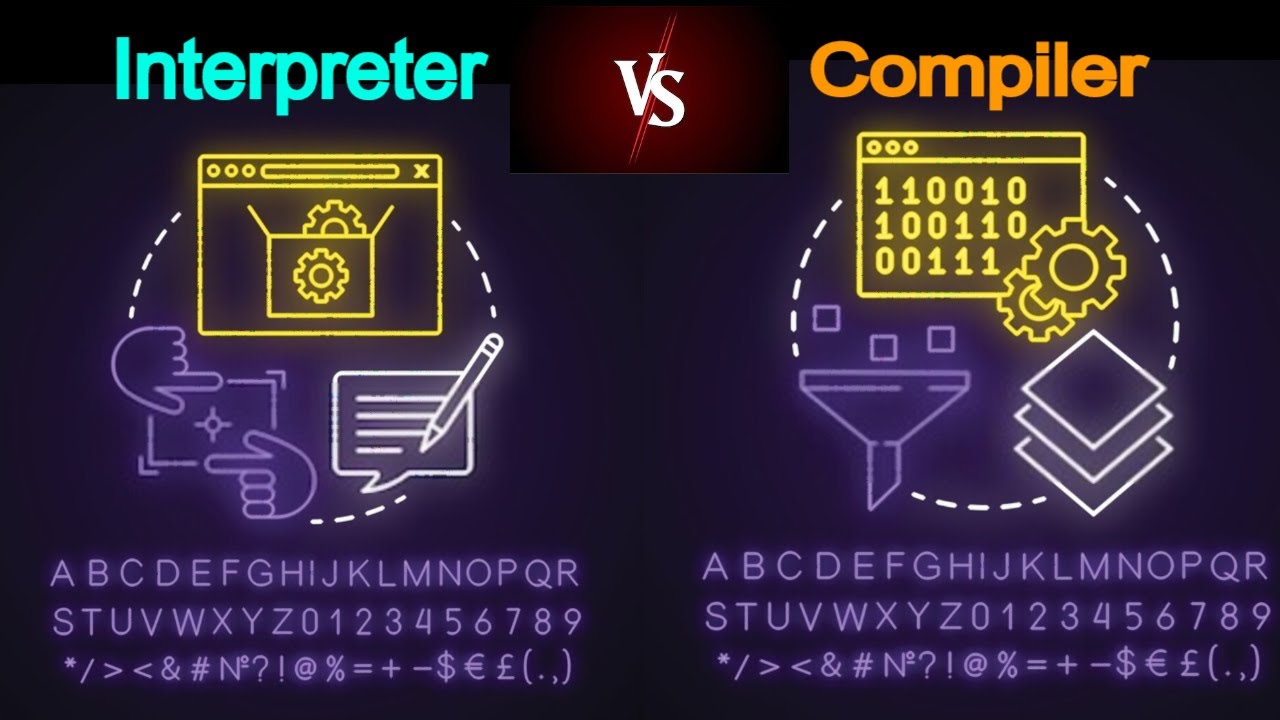
May 12, 2024
Compilers and Interpreters: Understanding the Backbone of Programming
In the vast universe of programming, where lines of code weave intricate digital landscapes, two silent yet powerful entities reign supreme: compilers and interpreters. These unsung heroes translate human-readable code into machine-executable instructions, enabling the magic of software to unfold. Yet, for many, the distinction between compilers and interpreters remains elusive, shrouded in technical jargon and mystique. Fear not, for we embark on a journey to demystify these enigmatic entities and shed light on their pivotal roles in the realm of programming.
Unveiling the Compiler:
Imagine a skilled artisan meticulously crafting a masterpiece, meticulously chiseling away to reveal the essence of their creation. Much like this artisan, a compiler is a robust tool that meticulously translates an entire program from a high-level programming language to machine code in one fell swoop. This transformation process occurs in distinct stages, each serving a unique purpose in the journey from human-readable code to machine-executable instructions.
Lexical Analysis: The journey begins with lexical analysis, where the compiler dissects the source code into meaningful tokens such as keywords, identifiers, and operators. These tokens serve as the building blocks of the subsequent stages.
Syntax Analysis (Parsing): With tokens in hand, the compiler embarks on syntax analysis, scrutinizing the structure of the code to ensure it conforms to the rules of the programming language's grammar. This stage often involves generating a parse tree or abstract syntax tree (AST) to represent the hierarchical structure of the code.
Semantic Analysis: Once the syntax is validated, the compiler delves deeper into semantic analysis, examining the meaning behind the code. This involves type checking, scope resolution, and other checks to ensure logical correctness.
Intermediate Code Generation: With a thorough understanding of the code, the compiler proceeds to generate intermediate code, a platform-independent representation of the program's logic. This intermediate code serves as the bridge between the high-level source code and the target machine code.
Optimization: Armed with intermediate code, the compiler unleashes a barrage of optimization techniques aimed at enhancing the program's performance and efficiency. These optimizations range from simple peephole optimizations to complex algorithms that analyze and transform the code.
Code Generation: The culmination of the compiler's journey is code generation, where the optimized intermediate code is translated into machine code specific to the target architecture. This machine code is the language that computers understand, enabling them to execute the program with blazing speed and precision.
Deciphering the Interpreter:
While compilers operate with surgical precision, translating entire programs in one go, interpreters take on a more intimate role, executing code line by line in real-time. Like a wise sage imparting wisdom one verse at a time, interpreters analyze and execute each statement of the program sequentially, without the need for intermediate or machine code generation.
Parsing and Analysis: The journey of interpretation begins much like that of compilation, with parsing and analysis of the source code to ensure syntactic and semantic correctness. However, unlike compilers, interpreters typically perform these steps dynamically as they execute each line of code.
Execution: With each line of code validated, the interpreter executes it immediately, producing the desired output or effect. This real-time execution allows for rapid prototyping and debugging, as programmers can observe the behavior of their code incrementally.
Dynamic Typing and Memory Management: Interpreted languages often feature dynamic typing and memory management, where data types and memory allocations are determined at runtime. This flexibility comes at the cost of performance but offers unparalleled expressiveness and ease of use.
Portability: One of the key advantages of interpreters is their portability, as they can execute code on any system with the appropriate interpreter installed. This makes interpreted languages like Python and JavaScript popular choices for cross-platform development and scripting.
Bridging the Gulf:
While compilers and interpreters may seem like polar opposites, they share a common goal: to bridge the gulf between human-readable code and machine-executable instructions. Each approach offers its own set of advantages and trade-offs, catering to different programming paradigms, performance requirements, and development workflows.
In practice, many modern programming languages employ a hybrid approach, leveraging both compilation and interpretation to strike a balance between performance and flexibility. Just-in-time (JIT) compilers, for example, dynamically translate portions of code into machine code at runtime, combining the speed of compilation with the versatility of interpretation.
Conclusion:
In the ever-evolving landscape of programming, compilers and interpreters stand as stalwart guardians, translating the visions of programmers into tangible reality. Whether compiling entire programs with surgical precision or interpreting code line by line with unwavering diligence, these silent entities form the backbone of software development, empowering programmers to push the boundaries of creativity and innovation. So, the next time you marvel at the wonders of software, remember the unsung heroes behind the scenes: compilers and interpreters, the silent architects of the digital age.
931 views
